How to Build a Trading Bot with ChatGPT
Introduction
Overview of Trading Bots
Trading bots are automated software programs that interact with financial exchanges and make trading decisions on behalf of users. These bots can execute trades at speeds and frequencies that would be impossible for a human trader to achieve. They use various algorithms and strategies to analyze market data, identify trading opportunities, and manage trades.
Introduction to ChatGPT
ChatGPT, developed by OpenAI, is a language model based on the GPT-4 architecture. It can understand and generate human-like text, making it a powerful tool for natural language processing tasks. When applied to trading, ChatGPT can help in analyzing market trends, generating trading signals, and even executing trades based on predefined strategies.
Benefits of Combining Trading Bots with ChatGPT
Combining the computational power of trading bots with the analytical capabilities of ChatGPT can enhance trading performance. ChatGPT can provide insights and make predictions based on vast amounts of data, which can be used by trading bots to make informed decisions. This combination can lead to more accurate trading strategies and potentially higher profits.
Brief Summary of What Will be Covered
In this article, we will explore how to build a trading bot integrated with ChatGPT. We will start with understanding the basics of trading bots and ChatGPT, set up the necessary development environment, design the bot, and provide a step-by-step guide to developing and deploying the bot. Additionally, we will discuss best practices and ethical considerations to ensure responsible trading.
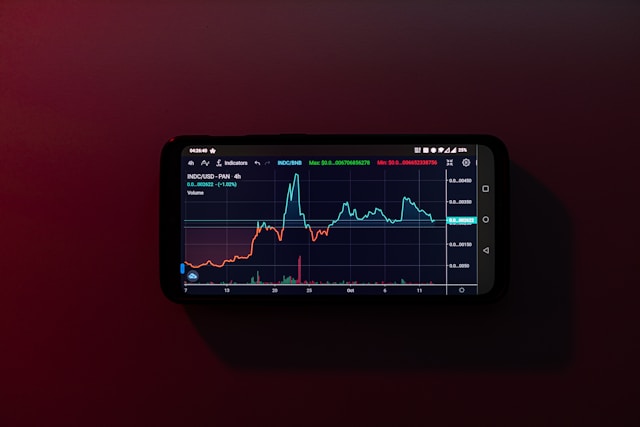
Understanding Trading Bots
Definition and Purpose
Trading bots are sophisticated algorithms designed to interact with financial markets and execute trades on behalf of traders. These bots can analyze market data, apply trading strategies, and execute trades automatically. The primary purpose of trading bots is to capitalize on market opportunities by executing trades faster and more efficiently than human traders.
Types of Trading Bots
There are various types of trading bots, each designed to implement different trading strategies. Here are some common types:
-
Arbitrage Bots: These bots exploit price differences across different exchanges or markets. They buy an asset at a lower price on one exchange and sell it at a higher price on another, pocketing the difference.
-
Market Making Bots: These bots provide liquidity to the markets by continuously placing buy and sell orders. They profit from the spread between the bid and ask prices.
-
Trend Following Bots: These bots identify and follow market trends. They typically use technical indicators to determine the direction of the market and make trades that align with the prevailing trend.
Key Features and Functionalities
Trading bots come with various features and functionalities that enhance their performance and usability:
- Automated Trading: The ability to execute trades automatically based on predefined criteria.
- Backtesting: Testing trading strategies on historical data to evaluate their effectiveness before deploying them in live markets.
- Risk Management: Implementing measures to manage and mitigate trading risks, such as setting stop-loss and take-profit levels.
- Real-time Data Analysis: Analyzing market data in real-time to make informed trading decisions.
- Customization: Allowing users to customize trading strategies and parameters to suit their specific needs and preferences.

Introduction to ChatGPT
What is ChatGPT?
ChatGPT is a state-of-the-art language model developed by OpenAI, based on the GPT-4 architecture. It is designed to understand and generate human-like text, making it capable of engaging in natural language conversations. ChatGPT has been trained on a diverse dataset, allowing it to perform a wide range of language-based tasks, including text generation, translation, summarization, and more.
How ChatGPT Works
ChatGPT works by using deep learning techniques to analyze and generate text. It is based on a transformer architecture, which allows it to process and understand context in a conversation. The model predicts the next word in a sequence based on the words that came before it, enabling it to generate coherent and contextually relevant responses.
Key components of ChatGPT's functionality include:
- Tokenization: Breaking down text into smaller units (tokens) that the model can process.
- Contextual Understanding: Using attention mechanisms to understand the context of a conversation.
- Text Generation: Predicting and generating the next word or sequence of words based on the given context.
Use Cases of ChatGPT in Various Industries
ChatGPT has a wide range of applications across different industries, including:
- Customer Support: Automating responses to common customer queries and providing support through chatbots.
- Content Creation: Assisting in generating articles, blog posts, and other written content.
- Education: Providing tutoring and answering questions in educational settings.
- Healthcare: Assisting with patient inquiries and providing medical information.
- Finance: Analyzing financial data and generating reports.
Specific Use Cases in Trading
In the trading industry, ChatGPT can be leveraged in several ways:
- Market Analysis: Analyzing market sentiment and trends by processing large volumes of financial news and social media data.
- Signal Generation: Generating trading signals based on the analysis of market data and trends.
- Trade Execution: Assisting in the execution of trades by providing insights and recommendations.
- Risk Management: Analyzing risk factors and providing recommendations to mitigate risks.
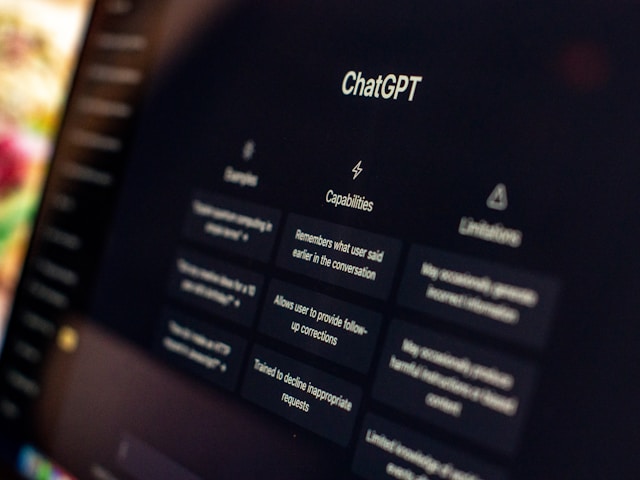
Setting Up Your Environment
Prerequisites and Tools Required
Before you start building your trading bot with ChatGPT, you need to ensure you have the necessary tools and prerequisites in place. Here’s a list of what you’ll need:
- Python: The programming language used to build the trading bot. Make sure you have Python 3.7 or higher installed.
- IDE/Code Editor: An integrated development environment or code editor like PyCharm, VS Code, or Jupyter Notebook.
- API Access: Access to trading platforms or exchanges that provide APIs (such as Binance, Coinbase, etc.).
- OpenAI API Key: An API key to access ChatGPT through OpenAI’s API.
- Git: Version control system to manage your codebase.
- Libraries and Packages: Various Python libraries that will be required, which will be discussed in the following subsections.
Setting Up a Development Environment
Installing Python
If you don’t have Python installed, you can download it from the official Python website. Follow the installation instructions for your operating system. Ensure that Python and pip (Python package installer) are added to your system’s PATH.
Necessary Libraries and Dependencies
You’ll need to install several Python libraries and packages to build your trading bot. Here are the key libraries and how to install them:
-
OpenAI: This library allows you to interact with the OpenAI API to use ChatGPT.
pip install openai -
Pandas: A powerful data analysis and manipulation library.
pip install pandas -
NumPy: A library for numerical computing.
pip install numpy -
Requests: A simple HTTP library for Python, useful for making API calls.
pip install requests -
TA-Lib: A library for technical analysis of financial markets.
pip install TA-Lib -
Matplotlib: A plotting library for creating visualizations.
pip install matplotlib -
CCXT: A library for cryptocurrency trading with support for many exchanges.
pip install ccxt
Example of Setting Up a Virtual Environment
It’s good practice to create a virtual environment for your project to manage dependencies. Here’s how you can do it:
-
Create a virtual environment:
python -m venv trading_bot_env -
Activate the virtual environment:
- On Windows:
trading_bot_env\Scripts\activate - On macOS/Linux:
source trading_bot_env/bin/activate
- On Windows:
-
Install the required libraries within this virtual environment:
pip install openai pandas numpy requests TA-Lib matplotlib ccxt
This section ensures you have all the necessary tools and environment setup to start building your trading bot.
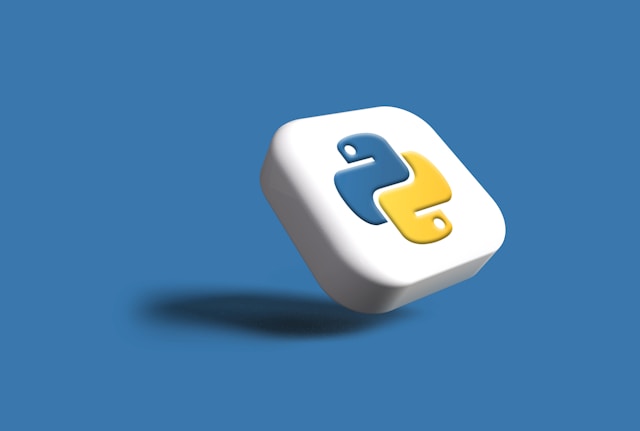
Designing the Trading Bot
Defining Objectives and Strategies
Before you start coding your trading bot, it’s crucial to define your trading objectives and strategies. Here are some key points to consider:
- Trading Goals: Determine what you want to achieve with your trading bot. Are you looking for short-term gains, long-term investments, or arbitrage opportunities?
- Risk Tolerance: Assess your risk tolerance to tailor your bot’s strategies accordingly.
- Trading Strategies: Decide on the trading strategies your bot will implement, such as momentum trading, mean reversion, or market making.
Choosing Trading Platforms and APIs
Select a trading platform or exchange that supports automated trading through APIs. Some popular options include:
- Binance: Known for its low fees and extensive range of cryptocurrencies.
- Coinbase Pro: Offers robust security features and is user-friendly.
- Kraken: Provides advanced trading features and high liquidity.
Each platform has its own API documentation, which you’ll need to follow to connect your bot.
Creating a Blueprint for the Bot
Design a blueprint outlining the bot’s structure and functionalities. This blueprint will serve as a roadmap for your development process. Key components of the blueprint include:
- Data Collection: How the bot will collect and process market data.
- Decision Making: The logic and algorithms used for making trading decisions.
- Execution: How trades will be executed on the selected platform.
- Monitoring and Logging: Methods for tracking the bot’s performance and logging its activities.
Integrating ChatGPT with the Bot
Integrating ChatGPT with your trading bot involves several steps:
- Set Up OpenAI API: Obtain an API key from OpenAI and set up the necessary environment to use it.
- Define Interaction Points: Determine where and how ChatGPT will interact with your bot, such as analyzing market sentiment or providing trade recommendations.
- Implement API Calls: Write functions to make API calls to ChatGPT and process its responses.
Example Integration Code
Here’s a basic example of how to integrate ChatGPT with your trading bot:
import openai
import requests
# Set your OpenAI API key
openai.api_key = 'your-api-key-here'
def get_chatgpt_response(prompt):
response = openai.Completion.create(
engine="davinci-codex",
prompt=prompt,
max_tokens=100
)
return response.choices[0].text.strip()
# Example usage
market_data = "BTC/USD price is 40000. What should be my next move?"
chatgpt_response = get_chatgpt_response(market_data)
print("ChatGPT Response:", chatgpt_response)
Developing the Trading Bot
Step-by-Step Development Guide
Connecting to Trading Platforms
To start developing your trading bot, the first step is to connect to your chosen trading platform via its API. Here’s an example using the Binance API:
-
Install the CCXT library:
pip install ccxt -
Set up API keys:
import ccxt binance = ccxt.binance({ 'apiKey': 'your_api_key', 'secret': 'your_secret_key', }) -
Fetch market data:
markets = binance.load_markets() ticker = binance.fetch_ticker('BTC/USDT') print(ticker)
Implementing Trading Strategies
Implement your chosen trading strategy within the bot. For example, a simple moving average crossover strategy:
-
Calculate moving averages:
import pandas as pd def get_historical_data(symbol, timeframe='1d', limit=100): ohlcv = binance.fetch_ohlcv(symbol, timeframe, limit=limit) df = pd.DataFrame(ohlcv, columns=['timestamp', 'open', 'high', 'low', 'close', 'volume']) df['timestamp'] = pd.to_datetime(df['timestamp'], unit='ms') return df data = get_historical_data('BTC/USDT') data['SMA_50'] = data['close'].rolling(window=50).mean() data['SMA_200'] = data['close'].rolling(window=200).mean() -
Define trading signals:
def generate_signals(data): data['signal'] = 0 data['signal'][50:] = np.where(data['SMA_50'][50:] > data['SMA_200'][50:], 1, 0) data['position'] = data['signal'].diff() return data signals = generate_signals(data)
Utilizing ChatGPT for Decision Making
Incorporate ChatGPT to enhance decision-making by analyzing additional data or generating insights. For example:
-
Analyze market sentiment:
import openai openai.api_key = 'your-api-key-here' def analyze_sentiment(text): response = openai.Completion.create( engine="davinci-codex", prompt=f"Analyze the sentiment of the following text: {text}", max_tokens=50 ) return response.choices[0].text.strip() news_headline = "Bitcoin price surges after latest market rally" sentiment = analyze_sentiment(news_headline) print("Sentiment Analysis:", sentiment) -
Incorporate sentiment into trading strategy:
def make_trade_decision(signals, sentiment): last_signal = signals.iloc[-1] if last_signal['position'] == 1 and 'positive' in sentiment: print("Buy Signal with Positive Sentiment") # Execute buy order logic here elif last_signal['position'] == -1 and 'negative' in sentiment: print("Sell Signal with Negative Sentiment") # Execute sell order logic here sentiment = analyze_sentiment("Recent positive news about Bitcoin") make_trade_decision(signals, sentiment)
Testing and Debugging
Before deploying your bot, thoroughly test it using historical data and simulated trading environments:
-
Backtesting:
def backtest_strategy(data): initial_balance = 10000 balance = initial_balance position = 0 # 0 means no position, 1 means long for i in range(1, len(data)): if data['position'].iloc[i] == 1: # Buy signal if position == 0: position = balance / data['close'].iloc[i] balance = 0 print(f"Buying at {data['close'].iloc[i]}") elif data['position'].iloc[i] == -1: # Sell signal if position > 0: balance = position * data['close'].iloc[i] position = 0 print(f"Selling at {data['close'].iloc[i]}") final_balance = balance + position * data['close'].iloc[-1] print(f"Final Balance: {final_balance}") backtest_strategy(signals) -
Debugging:
- Use logging to track the bot’s actions and decisions.
- Test with small amounts of capital before scaling up.
This section guides you through developing your trading bot, from connecting to trading platforms to implementing strategies and utilizing ChatGPT for enhanced decision-making.
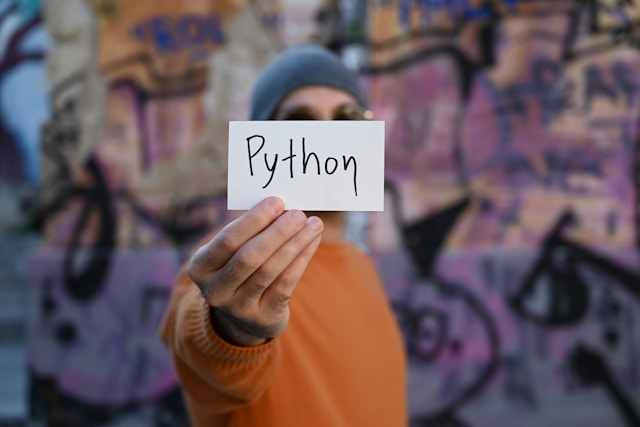
Deploying and Maintaining the Bot
Deployment Options
Once your trading bot is developed and thoroughly tested, you need to deploy it to a production environment. Here are some deployment options:
-
Cloud Services: Use cloud platforms like AWS, Google Cloud, or Microsoft Azure to host your trading bot. These platforms offer scalability, reliability, and various tools to monitor and manage your bot.
# Example: Using AWS EC2 import boto3 ec2 = boto3.resource('ec2') instance = ec2.create_instances( ImageId='ami-0abcdef1234567890', # Example AMI ID MinCount=1, MaxCount=1, InstanceType='t2.micro', KeyName='your-key-pair-name' ) print("EC2 instance created:", instance[0].id) -
VPS (Virtual Private Server): Deploy your bot on a VPS for more control over the server environment. Providers like DigitalOcean, Linode, and Vultr offer cost-effective VPS solutions.
# Example: Setting up a Python environment on a VPS ssh root@your_vps_ip apt update && apt upgrade -y apt install python3-pip -y pip3 install virtualenv -
Docker Containers: Use Docker to containerize your trading bot, ensuring it runs consistently across different environments.
# Dockerfile example FROM python:3.8-slim-buster WORKDIR /app COPY requirements.txt requirements.txt RUN pip3 install -r requirements.txt COPY . . CMD ["python3", "your_trading_bot.py"]
Continuous Monitoring and Maintenance
Deploying your bot is just the beginning. Continuous monitoring and maintenance are crucial to ensure it operates correctly and adapts to market changes.
-
Monitoring:
-
Logs: Use logging frameworks like
loggingin Python to keep track of your bot’s activities and errors.import logging logging.basicConfig(filename='trading_bot.log', level=logging.INFO) logging.info('This is an info message') -
Alerts: Set up alerts to notify you of critical issues or significant events (e.g., trades executed, errors encountered). Services like AWS CloudWatch, Google Cloud Monitoring, and third-party tools like Datadog can be useful.
# Example: Sending email alerts import smtplib from email.mime.text import MIMEText def send_alert(subject, body): msg = MIMEText(body) msg['Subject'] = subject msg['From'] = 'your_email@example.com' msg['To'] = 'recipient_email@example.com' s = smtplib.SMTP('smtp.example.com') s.login('your_email@example.com', 'your_password') s.sendmail('your_email@example.com', ['recipient_email@example.com'], msg.as_string()) s.quit() send_alert('Trading Bot Alert', 'This is a test alert.')
-
-
Maintenance:
- Regular Updates: Keep your bot’s dependencies and algorithms up-to-date. Market conditions and trading platforms can change, so your bot must adapt accordingly.
- Performance Tuning: Regularly review your bot’s performance and make necessary adjustments to improve efficiency and profitability.
Updating Strategies Based on Performance
Over time, you’ll need to update your trading strategies based on performance data. Here’s how to approach it:
-
Analyze Performance Data: Use the logs and trading records to analyze your bot’s performance. Identify patterns, strengths, and weaknesses in your strategy.
import pandas as pd # Example: Analyzing trade performance trade_data = pd.read_csv('trade_logs.csv') performance_summary = trade_data.describe() print(performance_summary) -
Optimize Algorithms: Based on your analysis, tweak your algorithms to improve performance. This could involve adjusting parameters, changing the data sources, or implementing new trading strategies.
-
Backtesting Updates: Before deploying new strategies, backtest them using historical data to ensure they are robust and effective.
def backtest_updated_strategy(data): # Implement backtesting logic for updated strategy pass updated_signals = generate_signals(data) # Example function call backtest_updated_strategy(updated_signals)
By following these steps, you ensure that your trading bot remains effective and profitable in the long run.
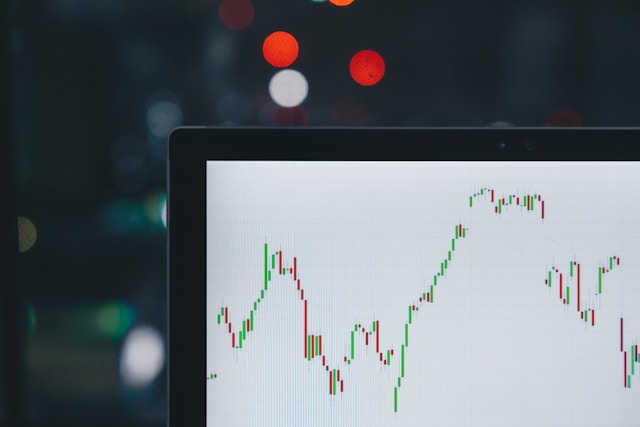
Best Practices and Ethical Considerations
Ensuring Security and Compliance
When developing and deploying a trading bot, security and compliance should be top priorities. Here are some best practices:
-
API Key Management: Keep your API keys secure. Avoid hardcoding them in your source code. Use environment variables or secure vaults to store them.
import os api_key = os.getenv('API_KEY') secret_key = os.getenv('SECRET_KEY') -
Encryption: Encrypt sensitive data, both at rest and in transit. Use HTTPS for API calls to ensure data is encrypted during transmission.
-
Authentication and Authorization: Implement strong authentication and authorization mechanisms to control access to your bot and its functionalities.
-
Regular Audits: Conduct regular security audits to identify and address vulnerabilities. Keep your software and dependencies up to date to protect against known security issues.
Avoiding Common Pitfalls
Trading bots can be powerful tools, but there are common pitfalls to avoid:
-
Overfitting: Avoid overfitting your trading algorithms to historical data. An overfitted model may perform well on past data but fail in live trading.
from sklearn.model_selection import train_test_split data = get_historical_data('BTC/USDT') train, test = train_test_split(data, test_size=0.2, shuffle=False) -
Lack of Diversification: Diversify your trading strategies and assets to spread risk. Don’t rely on a single strategy or market.
-
Ignoring Market Conditions: Continuously monitor market conditions and adjust your strategies accordingly. What works in one market environment may not work in another.
Ethical Trading Practices
Ethical considerations are crucial in trading. Here are some guidelines to ensure responsible trading:
-
Transparency: Be transparent about the risks involved in using trading bots. Users should understand the potential for loss as well as gain.
-
Avoid Market Manipulation: Ensure your bot does not engage in unethical practices like spoofing or wash trading. These practices are illegal and can lead to severe penalties.
-
Fairness: Your trading bot should operate fairly, without taking advantage of other traders’ lack of information or technical capabilities.
-
Compliance: Adhere to the legal and regulatory requirements of the markets you are trading in. This includes reporting requirements, anti-money laundering (AML) regulations, and any other relevant laws.
Conclusion
By following these best practices and ethical considerations, you can develop a robust, secure, and responsible trading bot. Continuous learning and adaptation are key to staying ahead in the fast-paced world of trading. Remember, while trading bots can significantly enhance trading efficiency and profitability, they also come with risks that need to be managed carefully.